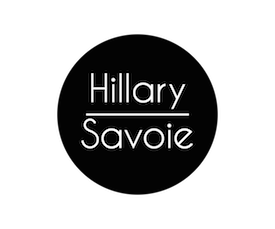So one of the things about having a child who is developmentally delayed and medically fragile is that you have to think strategically about the most basic things in their lives. I’m used to thinking about adaptive standing and walking and rolling devices, but there was one that sort of snuck up on me: Esmé’s bed.
Ez is small, below the first percentile for height and weight, so, she still fits in her crib just fine. Until recently we thought nothing of having her on the middle setting of the crib. This puts her mattress at 16″ below the crib sides. I can rock her to sleep and safely transfer her in without waking her, but, more importantly, we can reach her easily if she has a seizure or if she is in need of other urgent care, like suctioning, or regular care, like giving meds or food through her G-tube. She only started sitting up on her own relatively recently and, even after she started doing so she showed no interest in pulling up or reaching for things when she did. So we figured she was safe.
But in the last few weeks she has shown astonishing progress. Now she pulls things off of the coffee table, reaches for things on chairs, and has even started tentative efforts toward pulling herself up. We have a way to go until this skill is established, but we suddenly realized we needed to think about a new sleeping situation.
All in all this is great news! But it has also caused quite a conundrum.
I have been really troubled by how difficult it has been to attempt to find a reasonable sleep solution for Esmé. There are so few options out there and not one of them seems to properly fit Esmé’s potential long-term needs. Part of the problem is that we don’t have a prognosis for Esmé…and trying to find a sleep solution has brought a lot of these “unknowns” to the surface (our hopes as well as our fears), making it also an emotionally difficult process. While she is getting stronger daily, we don’t know whether we need to plan for her to never stand/walk, or if she will do so, but lack the cognitive ability to understand or physical ability to react to the danger of lunging over a railing. We don’t know whether some crib-like beds may contain her well now, but feel like a trap in the future…or whether her health will deteriorate, requiring more access and care. We also need to have very clear lines of sight to her since she has subtle seizures and respiratory issues.
I want to give those of you who are unfamiliar with this problem the lay of the land. The most typical solution for a child like Ez is something called a Sleep Safe Bed. This is one with high sides to prevent a child who can stand from being able to climb out. This is the only bed that Medicaid will cover, so the Sleep Safe bed has very little competition.
A friend who recently got one for her daughter has been referring to it in terms of prison metaphors…which seems about right, honestly.
Now, I know that these beds are a blessing for many children. But I cannot see this working for Esmé. It would be difficult to climb in with her. I do not think the windows allow for adequate lines of sight…and it seems like it could be difficult to lower the sides to access her easily when she needed help. Finally, in the event that she can physically get in and out of bed in the future, this bed will not permit her to do so easily…taking away valuable freedom from her and limiting the development of her life skills. We want her to be safe, of course, but we also do not want to curb her potential for a matter of our convenience of having her “contained.”
Enter the Kaisserbetten bed, which I thought would work perfectly for us. I was totally convinced their Ida bed would be the answer. The sides open wide to the left and right, permitting easy access. And the bed lowers all the way to the ground so that she could eventually get in and out of bed on her own. This bed, like the previous one, would offer articulation that may be important as Esmé grows, to aid with reflux and her respiratory status.
So we are in the process of considering co-designing a prototype with a bed designer that will allow us the option to contain her for safety, but also permit her to get in and out of her own bed–even though this route would mean forgoing insurance coverage. It might be less convenient for giving care as it will not go up and down or articulate, but I am hoping we can come up with a plan that will keep her safe while creating an environment that is able to inspire her to grow, explore, and gain independence!
Keep your fingers crossed that we will come up with something that works for all of us…




Good luck! It is maddening that there aren't more options for anything.
My husband builds furniture and stuff… Do you suppose if he put himself out there for the special needs community that he would find interest? I am sure he could build that bed you liked but with the specifications that you preferred, for instance.
There is certainly a real need for people who understand furniture and the needs of complex children and their caregivers!
I would like to thank you for the efforts you have made in writing this article. I am hoping the same best work from you in the future as well. In fact your creative writing abilities has inspired me to start my own BlogEngine blog now. Really the blogging is spreading its wings rapidly. Your write up is a fine example of it.
sleep tips
I am so happy to know that you will try your hand at blogging as well. It has been such a lovely way for me to share my daughter and our experiences. Best of luck. Please let me know when you get your blog up and running!